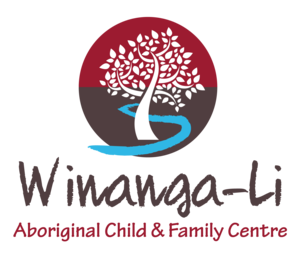Our language reawakening philosophy
How can we reawaken a language that was last in everyday use in families nearly a hundred years ago, and ensure that it is relevant for the
twenty-first century?
From the early days of invasion, words and phrases in the Gamilaraay and related Yuwaaalaraay and Yuwaalayaay languages were recorded by
explorers, missionaries, farmers and linguists. Words and phrases were written down as they were heard, which is why we now see different
spellings for people and places; for example, we have Kamilaroi, Gomeroi, Gamilaraay, etc. (see here
for an explanation of these different names).
Fortunately, the words from the many sources were collected, and their spellings standardised, in the 2003 dictionary (downloadable
here).
The different world faced by Aboriginal peoples after invasion required many additional words. From that first contact Gamilaraay people
developed terms for the language of this new world, such a dhimba, ‘sheep’, and later wilbaarr, ‘car’
(which was a new English use at that time of an older word which had come into English from French). The dictionary points out
that wilbaarr may come from Warrawilbaarru, the name of a whirlwind spirit, showing that traditional
words and ideas were being incorporated as the language adapted.
Words were also needed for different ways of interacting. We do not have good records of what people said when they traditionally met and left each other. The greeting Yaama was an early new use of the word which was traditionally only used as a question word (it is the way of making 'yes/no' questions). Using Yaluu for 'goodbye' is a more recent use of the word for 'again' (and other related meanings).

Along with everyday objects and activities, concepts such as different ways of marking time were also introduced. For example, traditional
Gamilaraay language did not have words for the months of the year because the ancestors marked the passage of time differently, using their
in-depth knowledge of stars, seasons, and animals on Country. In 2000 names for the months were discussed in a meeting of Elders and
linguists at Walgett. They did not want to try and adapt the English names based on Roman festivals (e.g. February from the Februa
festival), Gods (e.g. March from Mars), Emperors (e.g. July from Julius), or numbers (e.g. October from octo). The Elders at the Walgett
meeting suggested names for months based on their knowledge of what is happening on Country at those times. For example, for May they
suggested guduu, ‘Murray cod’, because the traditional season for catching the big cod started after the first hard frosts;
for June garriil, ‘cold’; and for July, they suggested barrgay, ‘older emu chicks’, which are seen at this time.
The current Elders in the Winanga-Li dhiiyaan (family) have decided to use those suggestions, as part of our approach to
reawakening the traditional language and normalising the use of Gamilaraay for modern life in our centre. To indicate that these are the
names of months, a suffix based on gilay (moon) is added to each word, giving Guduu-gil (May), Garriil-gil, Barrgay-gil (July),
etc. Where possible, we incorporate the traditional knowledge into our explanations (see here for other posters of the months).
.jpg)
Respect for our Elders is an important part of Gamilaraay culture, because they are the link to our past and hold the knowledge. When
someone asks the Language Program for the Gamilaraay word for an object or idea we sometimes need a new word, or a new use of an old
word. We consult the old sources and knowledge-holders and discuss ideas with linguists, Winanga-Li Elders and Yawiriawiri Murri Ganuur
Descendants (Traditional Owners) before they are approved. Sometimes this process is straightforward, but sometimes it takes
years of consultation and discussion.
The structure of Gamilaraay is very different from English, and there are often several suffixes added to the ends of words. In order to
support learning we use the same written system as the Gamilaraay Yuwaalaraay and Yuwaalayaay Dictionary (both written and online),
with hyphens to show the different suffixes.
The Winanga-Li Elders are committed to sharing the results of our language development for others to use in their own work and life, and most of our language materials are freely available on this website and our YouTube channel for respectful use by anyone wishing to learn and use the language.
We believe that this shows how we can move into the twenty-first century using a language which developed over thousands of years as a fundamental way of communicating our culture; merging the traditional with the contemporary is able to be achieved while still remaining respectful to the old ways. It also shows that when children know who they are and where they belong, they are confidently able to embrace language and cultural knowledge which ultimately will benefit the children of our Gamilaraay community - and the wider community - into the future.
This discussion is adapted from a post which was originally written in 2021 for the GECHO (Gunnedah Early Childhood Hub Online) blog by Leanne Pryor (former Early Learning Centre manager at Winanga-Li) and Hilary Smith (linguistics support).
Dr Hilary Smith
Approved by the Winanga-Li board, 25 May 2024

